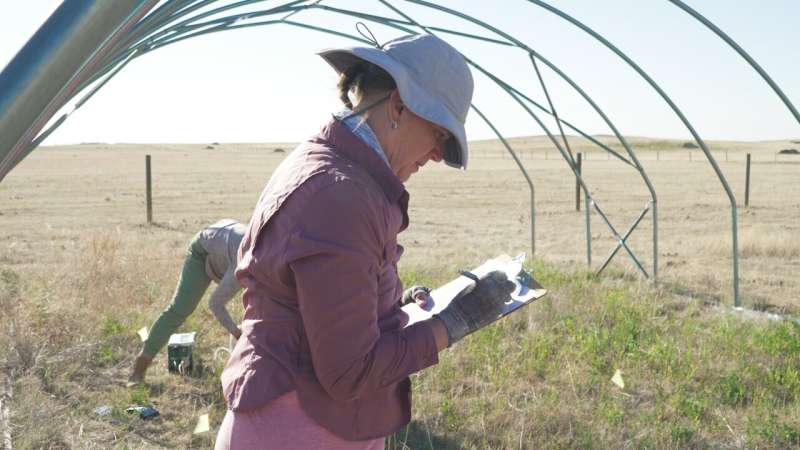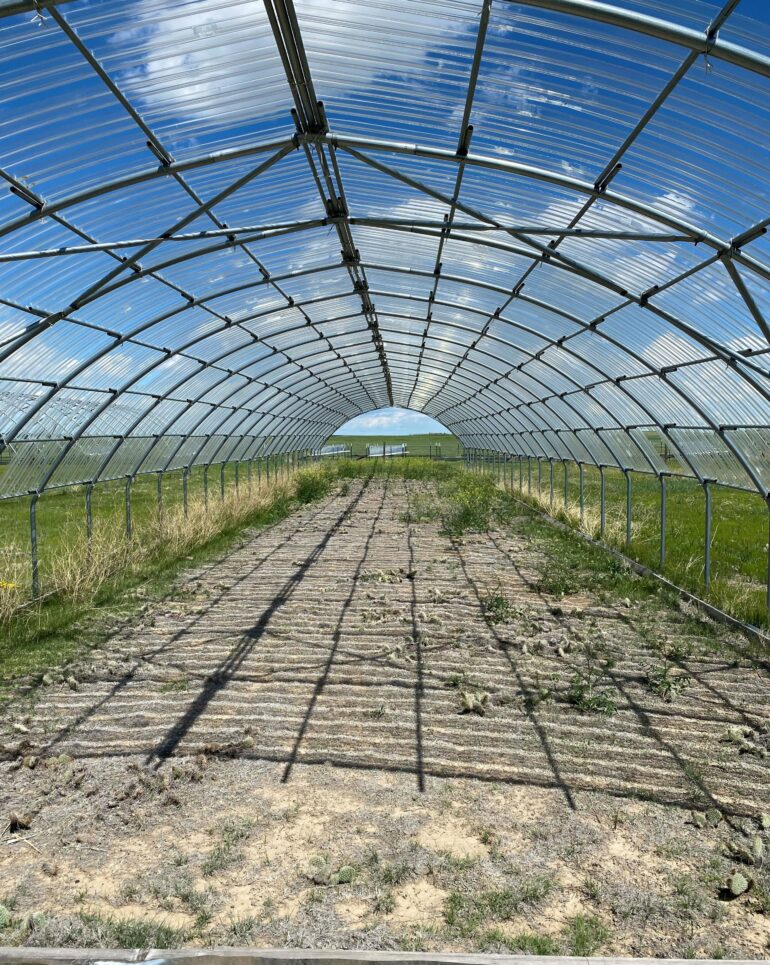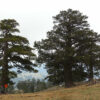A global study organized and led by Colorado State University scientists shows that the effects of extreme drought—which is expected to increase in frequency with climate change—has been greatly underestimated for grasslands and shrublands.
The findings—published in Proceedings of the National Academy of Sciences—quantify the impact of extreme short-term drought on grassland and shrubland ecosystems across six continents with a level of detail that was not previously possible.
It is the first time an experiment this extensive has been undertaken to generate a baseline understanding of the potential losses of plant productivity in these vital ecosystems.
Melinda Smith, a professor in the Department of Biology at CSU, led the study and is the first author on the paper. She said the observed reduction in a key carbon cycle process after a single 1-in-100-year drought event greatly exceeds previously reported losses for grasslands and shrublands.
“We were able to determine that the loss of aboveground plant growth—a key measure of ecosystem function—was 60% greater when short-term drought was extreme compared to the less severe droughts that have been more commonly experienced historically,” she said. “Past studies suffered from methodological differences when estimating the impacts of extreme drought in natural ecosystems, but our standardized, distributed approach here addressed that problem.”
Smith added that the project also showcases the variability in drought response across grassland and shrubland ecosystems—offering both a review of the global impacts of climate change as well as a glimpse into which areas will be most stressed or most resilient in the coming years.

Melinda Smith conducting research in the field. © Colorado State University College of Natural Sciences
Gathering global extreme drought data on grassland and shrubland ecosystems
Known as the International Drought Experiment, the newly-published research originally dates back to 2013 as part of the National Science Foundation’s Drought-Net Research Coordination Network. Altogether, there are more than 170 authors representing institutions from around the world cited in the new PNAS study, which was completed over the last four years.
To gather their data, researchers built rainfall manipulation structures to experimentally reduce the amount of naturally occurring precipitation available to ecosystems for at least a full growing season. About half of the participating sites imposed extreme drought conditions with these structures, while the rest imposed less severe drought for comparison.
As Earth’s climate continues to change, short-term droughts that are statistically extreme in intensity will become more common, with what were once considered 1-in-100-year droughts now potentially happening every two to five years, said Smith. But because of the historic rarity of extreme droughts researchers had been unable to estimate the actual magnitude of their ecological consequences.
Smith said grasslands and shrublands were perfect test areas to fill that research gap because they are easier to manipulate for study than other systems, such as forests. They also store more than 30% of the global stock of carbon and support key industries such as livestock production.
“They are key ecosystems that are scalable to the globe, which makes them highly relevant for this kind of work,” said Smith, who also serves as chair of the Faculty Council on campus. “Grasslands and shrublands cover between 30% and 40% of the globe and frequently see deficits in precipitation. That means they are more vulnerable to climate change.”
Findings from the sites also provide insight into how specific climates, soil and vegetation types broadly influence drought response. While the work shows that drier and less diverse sites like those in Colorado are likely to be the most vulnerable to extremes, Smith said the severity of the drought was the most consistent and important factor in determining an ecosystem’s response.
“Our data suggests greater losses in drier sites, but if you are getting to the extremes—which is what is being forecasted—we can generally expect substantial losses no matter where you are in the world,” she said. “We also found that even moderate losses from less severe droughts would still likely result in large impacts to the populations that rely on these systems. And then there is a combined loss of function across the globe to consider as well.”
Smith said the team is currently examining data collected from the full four years of the project to now assess multiyear drought impacts globally.
More information:
Smith, Melinda D. et al, Extreme drought impacts have been underestimated in grasslands and shrublands globally, Proceedings of the National Academy of Sciences (2024). DOI: 10.1073/pnas.2309881120. doi.org/10.1073/pnas.2309881120
Provided by
Colorado State University
Citation:
Global study finds extreme drought impacts on grasslands and shrublands (2024, January 8)



